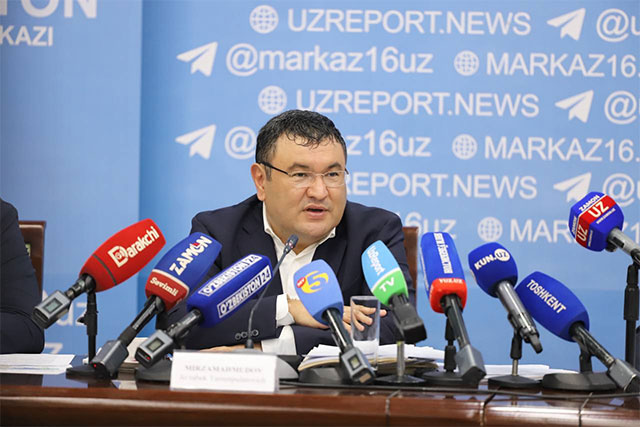
Uzbekistan Fully Prepared for Autumn-Winter Energy Season
Uzbekistan Fully Prepared for Autumn-Winter Energy Season
Tashkent, Uzbekistan (UzDaily.com) — On 28 October, Minister of Energy of Uzbekistan Jurabek Mirzamahmudov briefed the press on the country’s readiness for the 2025/2026 autumn-winter energy season and the performance of the fuel and energy sector.
Since October, the energy system has switched to autumn-winter operation mode, with round-the-clock monitoring and dedicated call centers for citizens: 1154 for electricity and 1104 for gas.
This year, 7,455 km of power lines and 1,748 transformer substations have been modernized, improving electricity supply for over 800,000 households in 954 mahallas. Peak electricity demand during winter is expected to reach 13.5 GWh, or 290–300 million kWh per day.
Electricity production in 2025 is forecast at 85.5 billion kWh, with approximately 23% generated from renewable sources, including solar, wind, and hydro. By year-end, more than 3,000 MW of renewable energy facilities, 1,167 MW of thermal power plants, and over 1,500 MW of energy storage systems are scheduled to come online. So far, 59 micro-hydropower plants have been commissioned, with 13 more planned. Additionally, households and businesses have installed nearly 2 GW of solar panels.
To support vulnerable populations, a one-time payment of 1 million UZS will be provided in November to families included in the Unified Social Protection Registry and additional need-based lists.
In the gas sector, 553.8 km of pipelines and 971 distribution points have been upgraded. A total of 512,700 tons of liquefied gas have been supplied, with an additional 142,400 tons expected by year-end. A reserve of over 29,000 household gas cylinders has been created. Gas distribution is being digitalized, including a pilot Face-ID project in Andijan region, and the UGaz system now covers 1,366 of 1,512 gas filling stations.
For the winter season, 10 million tons of local coal and 2 million tons of imported coal are planned, along with 995,000 tons of gasoline and 776,000 tons of diesel fuel. As of October 28, thermal power plants have received 95% of their planned coal supply.
Energy efficiency remains a priority: by 2025, the country aims to save 6 billion kWh of electricity and 4.4 billion cubic meters of gas, with 2.6 billion cubic meters of gas and 5.8 billion kWh of electricity already conserved.
In recent years, the frequency of emergencies has dropped by 50%, with average resolution times reduced to 1–1.5 hours. Emergency preparedness includes 1,201 response teams, 6,505 specialists, 905 vehicles, 370 units of specialized equipment, and large reserves of transformers, cables, insulators, and other materials.
Preparations cover all sectors—electricity, gas, coal, and petroleum—while modernization and digitalization efforts aim to ensure uninterrupted and safe energy supply for both the population and the economy.